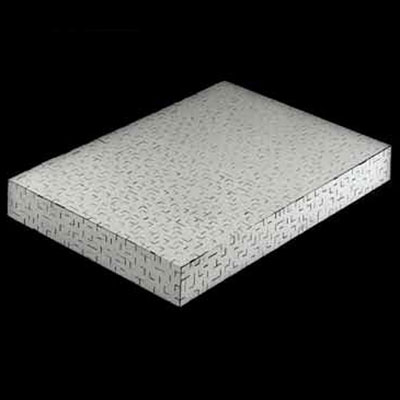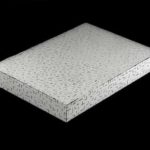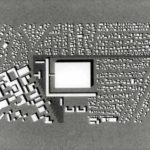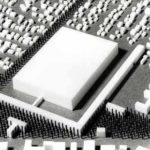Gewerbequartier Saatwinkler Damm / Berlin-Charlottenburg
„VOLKSHOCHREGAL“ © bHK1999
Unser Lebensraum erstickt an seinen Gütern. Erinnerungsstücke, Omas alter Schrank, das teuer erworbene Bild, die neue Sitzgarnitur, machen den ohnehin schon kleinen Wohnraum zum Gefängnis. Doch wohin mit den persönlichen Dingen? Ein Teil unserer Kleinode lagert in feuchten Kellern und muffigen Dachböden. Der heutige Mensch muss flexibel sein, ein ständiger Ortswechsel wird erwartet, doch wohin mit den vielen Büchern, der schönen Einbauküche? Wir benötigen Lösungen, die eine günstige und anspruchsvolle Aufbewahrung unserer Gegenstände möglich machen. Orte, die an die kulturelle Identität der Kosumgesellschaft anknüpfen, sich zu dieser bekennen und sie artikulieren.
Die Kubatur des Volkshochregals definiert sich durch die Größe der einzulagernden Normpaletten. Ein Regalbediengerät (RGB) lagert die Ware vollautomatisch ein und aus. Die Oberfläche der Fassade besteht aus handelsüblichen keramischen Kacheln. Die Randbereiche der 4,5 m x 4,5 m großen Sandwichelemente sind betont und erzeugen eine graphische Spur auf der Außenhaut.
„VOLKHOCHREGAL“ © bHK1999
(public high storage)
The space where we live is full of goods. Keepsakes, grandma`s old cupboard, the expensive picture or the new sofa make the already small living space to a prison. But what to do with those personal things? A part of our gems is stored in humid cellars or musty lofts. The man of today must be flexible, a permanent change of locality is expected. But where to do the many books, the nice kitchen? We need a solution that enables a particular storage of our personal things at a good price. Locations that are related to the cultural identity of the consumer society, that acknowledge and express this society.
The dimension of the „Volkhochregal“ is constituted by the size of the standard pallets which are deposited in it. A sort of fork lift truck automatically puts the stock in and takes it out. The facade`s surface is made of standard ceramic tiles. The fringe areas of the sandwich elements (size: 4,5 m x 4,5 m) are accented and produce a graphic track on the outer surface.
Kunstakademie Düsseldorf Klasse Baukunst
Prof. Ernst Kasper Verfasser: Christian Heuchel 1999



